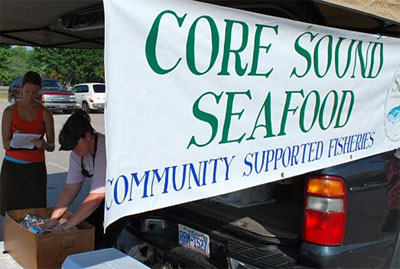The Community Supported Fishery (CSF) Model

Creating a Direct Connection Between Fishermen and Consumers.
Across the globe, small-scale commercial fishermen are facing significant challenges. In the Southeast U.S., rising fuel costs, an influx of seafood from abroad, increased regulations and other factors have caused many fishermen to leave their life on the water. To survive in the small-scale sector, fishermen must diversify their markets by beginning to think of innovative strategies to market and distribute their fish. One such strategy is utilizing the community supported fishery (CSF) model, which seeks to directly link fishermen to consumers. Consumers pay an amount before the CSF season begins, and in turn are provided high quality, local seafood through weekly “shares.” Not only do these direct sales provide fishermen with a premium price for their product, but consumers are educated about fishing methods, seasonality in seafood and the cultural heritage of coastal communities through a weekly newsletter. Shares are filled with a diverse range of species, thereby also expanding consumer perceptions about what types of fish are best to eat.
Core Sound Seafood, a CSF business in North Carolina, has been able to pay the fishermen they work with an average of 30% more than the traditional market would pay. Established in 2010, they have doubled their consumer base from 100 to 200 shareholders and have received excellent feedback about the service they provide.
Here and below is a link to a presentation about the CSF model, which gives a background on the decline of the small-scale commercial fishing industry in North Carolina, how fishermen need to shift their marketing strategies to a focus on high quality/locality and the successes, challenges and lessons learned from Core Sound Seafood’s experience. Also included are thoughts on how the CSF model could potentially be replicated abroad in Europe and developing countries.
By Anna Child

